Inside the Yellow Cocoon Shell (Original title: Bên trong vỏ kén vàng) has garnered attention as the sole representative of Vietnamese cinema at the Cannes Film Festival 2023. The film achieved significant recognition by winning the prestigious Caméra d’Or (Golden Camera) award, dedicated to outstanding first-time filmmakers.
After three months, the film was released in Vietnam, attracting local audiences. It is also the first art-house film to be released this year, following a series of commercial projects.
The Journey to Find Trust
The film revolves around the journey of Thiên (Lê Phong Vũ) – a young man who is lost, disillusioned with life, and struggling to find meaning amid a chaotic existence.
One night, Thiên receives a call from a motorcycle accident victim. He suddenly becomes the only relative to care for his 5-year-old nephew named Đạo (Nguyễn Thành) because the boy’s father has long abandoned them.
While the boy is still unconscious, Thiên must find a way to take the body back to their hometown for burial. After that, the character resolutely embarks on a quest to find his brother, hoping for a chance to reunite with his father.
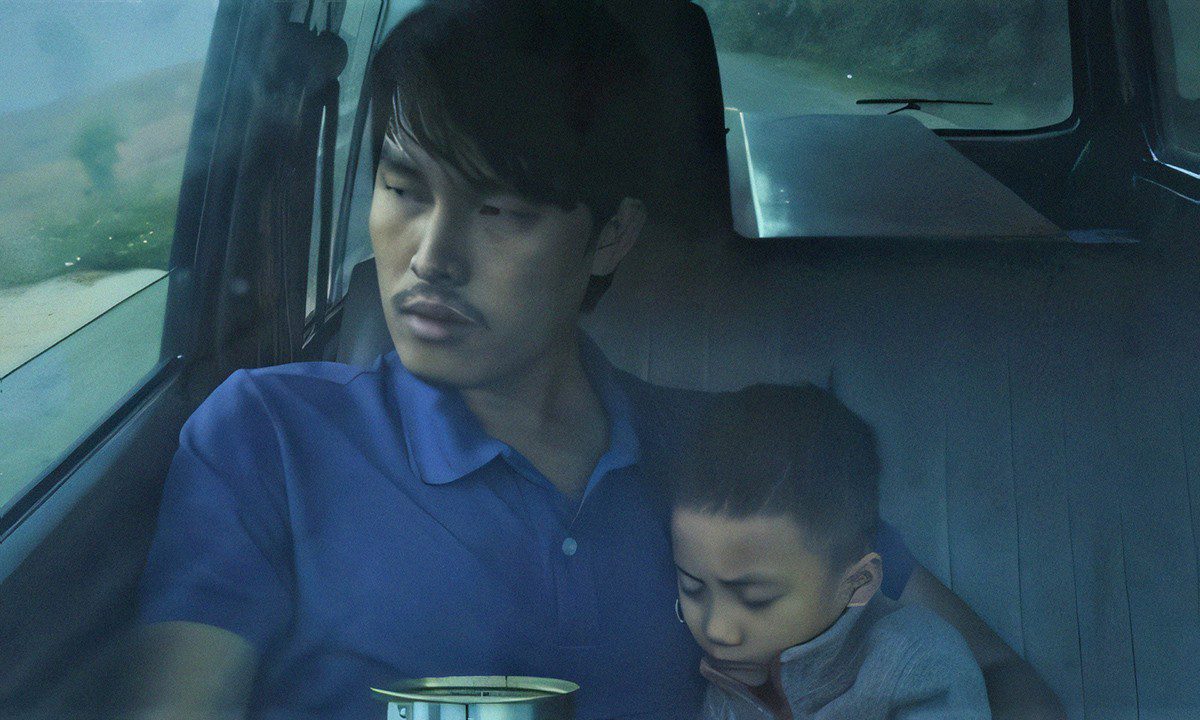
The work is the feature debut of director Phạm Thiên Ân, who previously made a short film called Stay Awake, Be Ready, released in 2019.
With a runtime of over 3 hours, Phạm Thiên Ân carefully weaves various themes about the meaning of existence. From the outset, Thiên is seen struggling and engaging in conversations about the purpose of life. Throughout his journey, he encounters many characters who reflect on existence and the meaning of being alive.
The theme of spirituality is also explored in a thought-provoking manner. The film often features scenes of prayer, meditation, and reflections on religious beliefs. Every transformation in Thiên’s search for his loved ones becomes a journey to rediscover the trust he has lost.
The Visual Aesthetics of Stillness
The most striking aspect of Bên trong vỏ kén vàng is its cinematography. The director skillfully crafts scenes that evoke a sense of meditative stillness, creating a vivid portrayal of the film’s contemplative themes.
Through Thiên’s journey, Phạm Thiên Ân guides viewers from the bustling streets of Ho Chi Minh City to the tranquil, untouched landscapes of Bảo Lộc – which is also the director’s hometown.
His style is reminiscent of renowned slow cinema directors such as Béla Tarr, Andrei Tarkovsky, and Abbas Kiarostami.
The filmmakers utilize long takes, capturing moments in a single shot without frequent cuts. The extended shots allow for a deeper contemplation of the scenes, enhancing the viewer’s experience.
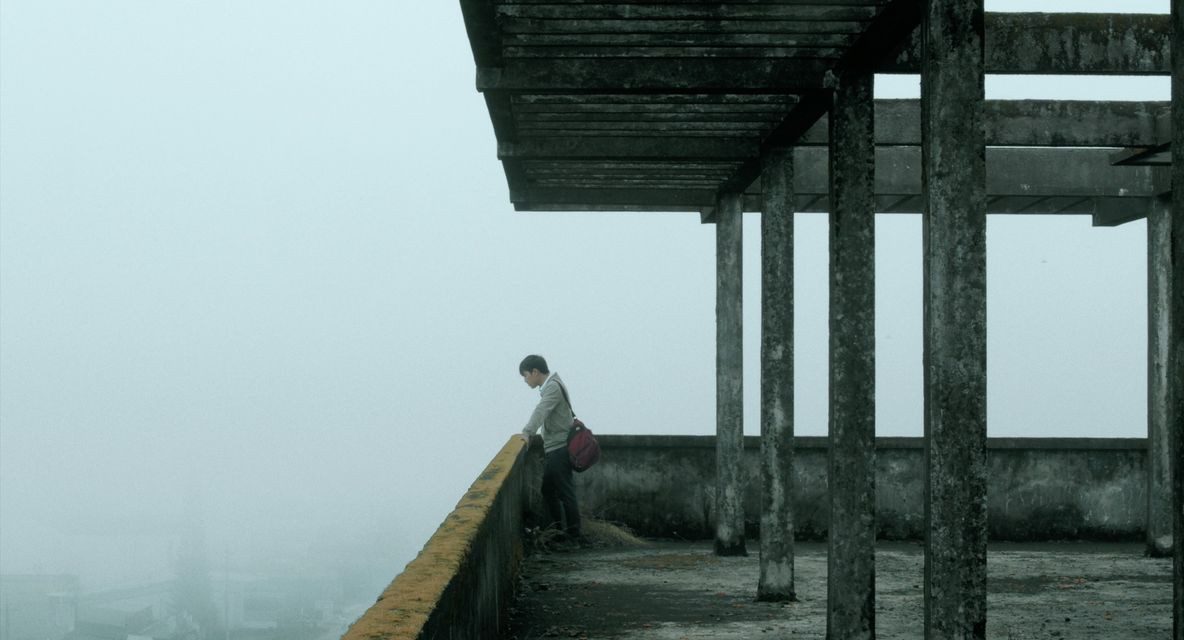

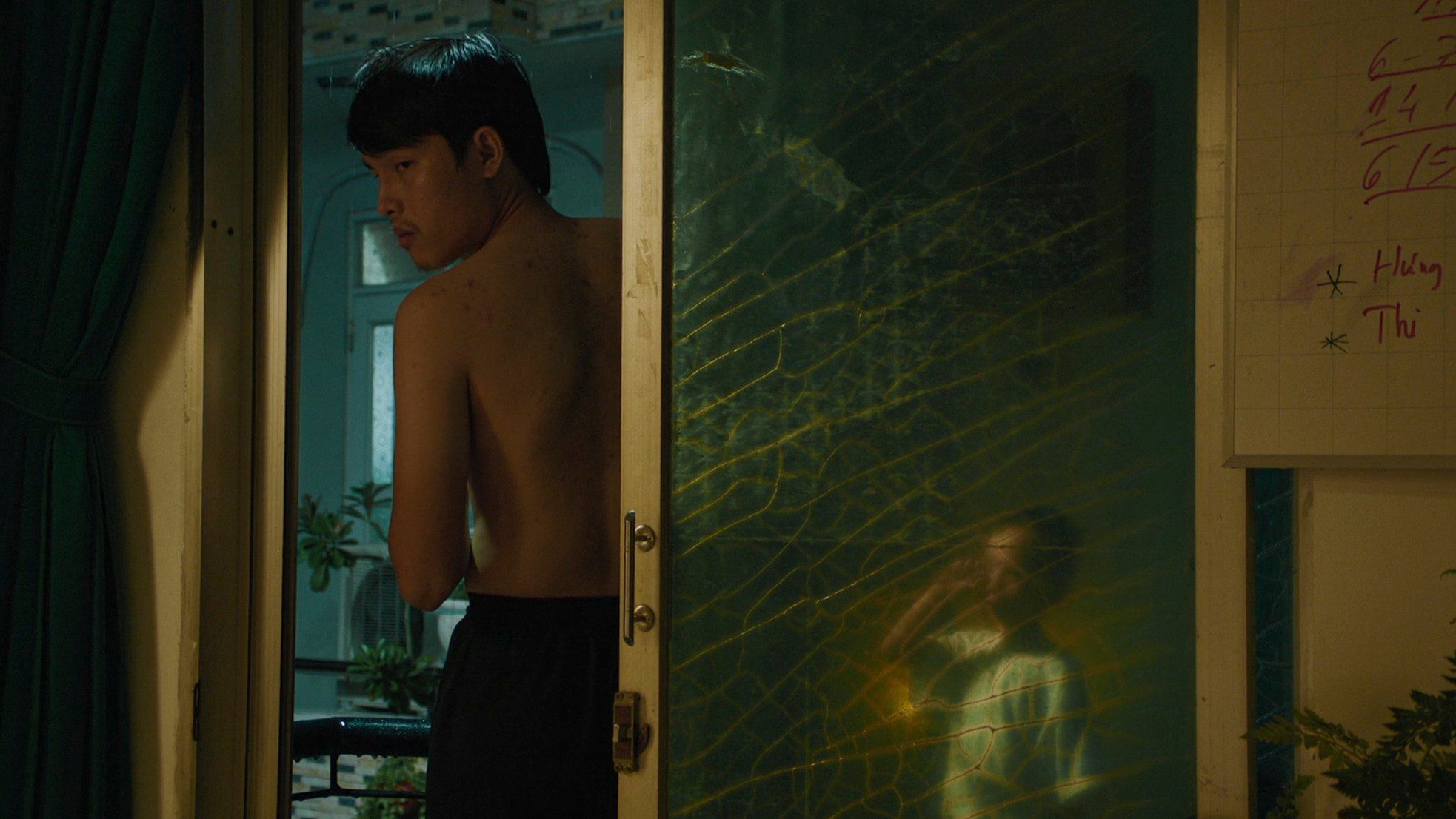
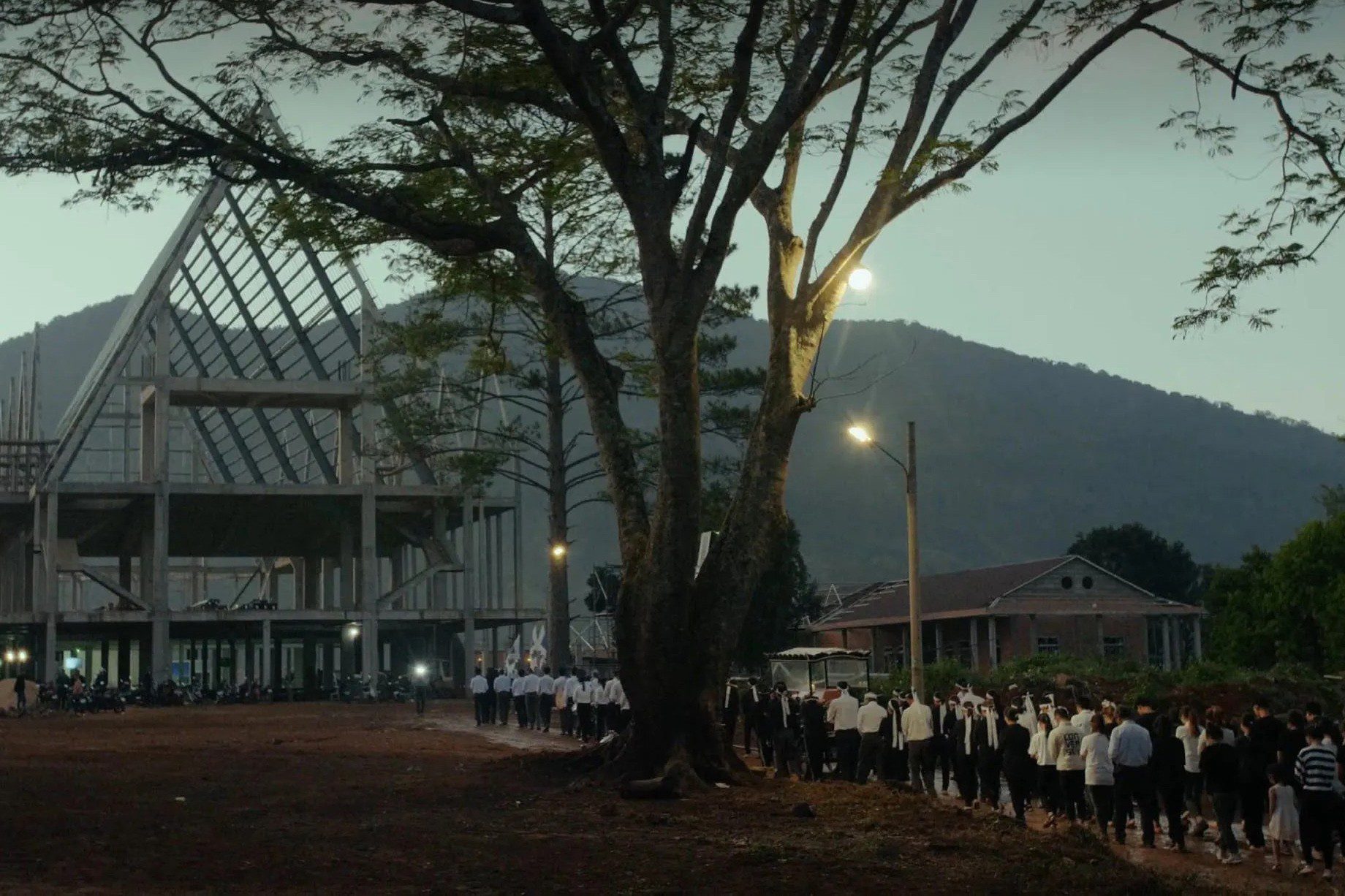
With a unique style, the mise-en-scène becomes a crucial element that helps each shot convey the intended message the director wishes to express.
There is a long scene lasting 25 minutes showcasing a conversation between two characters in a house. However, the director breaks conventions by placing the camera outside, allowing viewers to see the house but not the actors’ faces. There are also dark scenes where viewers might struggle to see what is happening.
While watching the film, viewers may sometimes feel as if they are indulging in an artistic piece. However, the essence of the film is the result of a meticulous process of calculation and deliberate pacing before action truly begins.
Food for Thought for Vietnamese Audiences
The emergence of Bên trong vỏ kén vàng evokes comparisons with Memento Mori: Đất (directed by Marcus Mạnh Cường Vũ) which was released last year. Both films belong to the art-house genre that attracts a niche audience. Their content raises many questions about life and death, intertwining elements of spirituality.
In this respect, both directors create a contrast between realistic scenes and dreamlike sequences to highlight the inner turmoil of the characters. Both films clearly demonstrate the essence of slow cinema with their lingering shots and minimalist filmmaking techniques.
However, while Memento Mori: Đất draws inspiration from the literary works of author Đặng Hoàng Giang, Bên trong vỏ kén vàng is built upon unique emotional experiences specific to director Phạm Thiên Ân.
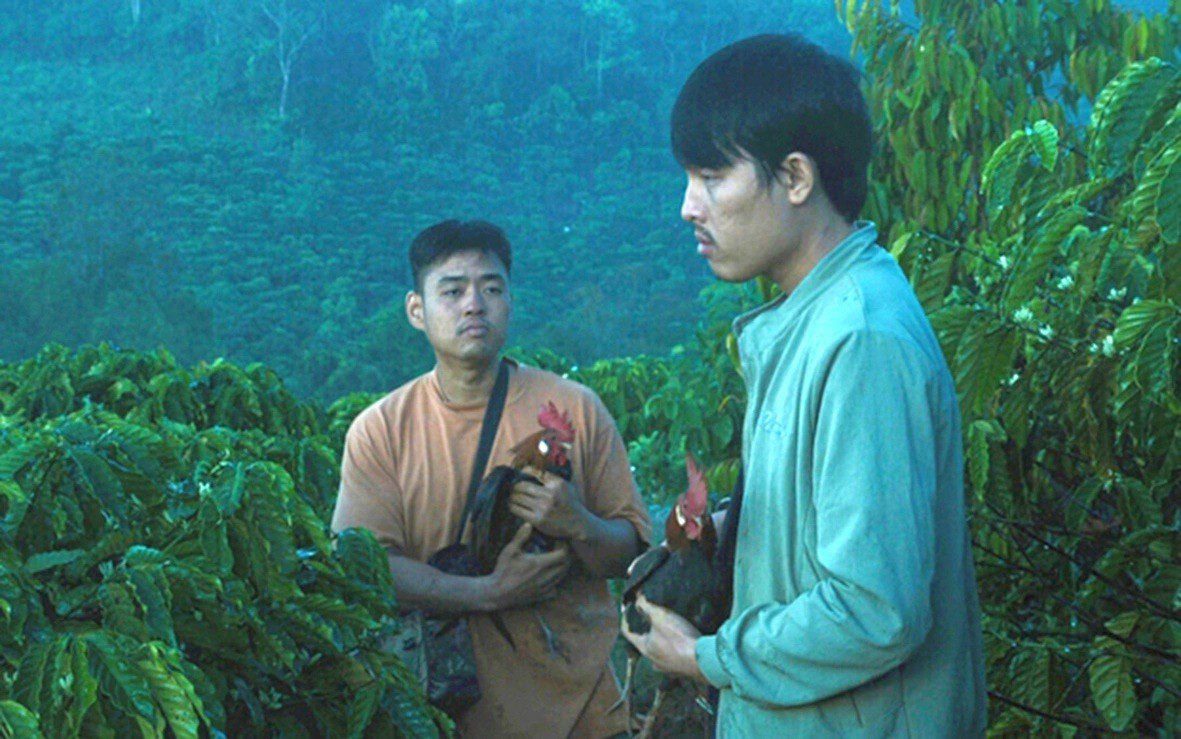
With a runtime of only 85 minutes, Memento Mori: Đất struggled to capture the interest of local audiences. According to data from Box Office Vietnam, the work directed by Marcus Mạnh Cường Vũ only grossed over 260 million VND. Its social media presence was also not particularly impactful.
In contrast, thanks to its Cannes success, Bên trong vỏ kén vàng has received considerable media attention upon its release in its homeland. However, the lengthy runtime of over 3 hours makes it a challenging film for mainstream audiences to digest.
Despite the slow pacing, this film stands out, differentiating itself from many blockbusters with fast-paced storytelling. However, it poses a challenge for viewers, especially those who are not fond of the slow cinema genre.
The success of Phạm Thiên Ân marks a significant milestone, creating a unique cinematic atmosphere that does not conform to any other Vietnamese works. However, for those unfamiliar, his work can come across as dense and difficult to grasp. Even the film’s visuals evoke imagery that is both stunning and elusive.















